
Activities
On this page of the website you will find the activities organised within the BioPhyMeTRE project
Online training
Due to the coronavirus emergency in the world, we had to modify some of the activities planned in the project, including laboratory training activities.
We, therefore, decided to start an online training activity that could be useful not only for the participants in the project, but also for anyone interested in knowing the scientific basis of the Retrospective Dosimetry. Below, you can find the complete recording of some lessons (about an hour each) concerning the main biological and physical methods and their applications in the Retrospective Dosimetry field.
Online training Lesson 1
Title: Biological Dosimetry: methods and applications in the field of the Retrospective dosimetry
Author: Antonella Testa
Description: The lesson will deal with the basic notions of the Biological Dosimetry, from its origin. The most used methods in the context of the Retrospective Dosimetry will be described and advantages, disadvantages of each technique will be highlighted. An overview of the main Biological Dosimetry Networks at International level, will be also described.
Online training Lesson 2
Title: PHYSICAL RETROSPECTIVE DOSIMETRY – Part 1 Introduction
Author: Nadica Maltar Strmečki
Description: In this lesson, the definition, scope and objectives of retrospective dosimetry were presented. The basic principles of physical methods (OSL, TL, EPR) in retrospective dosimetry with main advantages and disadvantages were demonstrated. The need for a complementary approach regarding biological and physical methods was emphasized.
Online training Lesson 3
Title: PHYSICAL RETROSPECTIVE DOSIMETRY – Part 2: Luminescence emergency dosimeters
Author: Emanuela Bortolin
Description: This second part of the online training course dedicated to physical retrospective dosimetry focuses on the use of the stimulated luminescence techniques (Optically/Photo-Stimulated Luminescence and Thermoluminescence) in emergency dosimetry. After a short description of the techniques (principle, signals, parameters influencing the response, dose recovery protocol) the lesson focuses on the results obtained with common-
Online training Lesson 4
Title: National capacity building in biodosimetry and prospects of international collaboration in radiation protection
Author: Laura Kenzhina
Description: This presentation is about the state of the biodosimetry service in Kazakhstan, based on the IRSE of the National Nuclear Center of Kazakhstan. Description of the institute, biodosimetric laboratory and achievements, methods used in the work, results of research of residents of the territories adjacent to the test site.
Online training Lesson 5
Title: The Cytokinesis-Block Micronucleus Technique
Author: Clarice Patrono
Description: As part of the collaboration between ENEA and IRSE, this lesson describes the in vitro cytokinesis-block micronucleus (CBMN) assay, a well-established and standardised method for biological dosimetry. The application of the CBMN technique in the novel biodosimetry method developed within the BioPhyMeTRE project Is also illustrated.
Web scoring inter-comparison exercises
During the first months of the project, we carried out web scoring inter-comparisons exercises between ENEA and IRSE, analyzing about 500 cells in metaphase and discussing the scoring criteria of chromosome aberrations. In fact, in the field of Biological Dosimetry, the standardization at all levels, is of fundamental importance and is one of the key points on which the creation of Biological Dosimetry Networks is based.
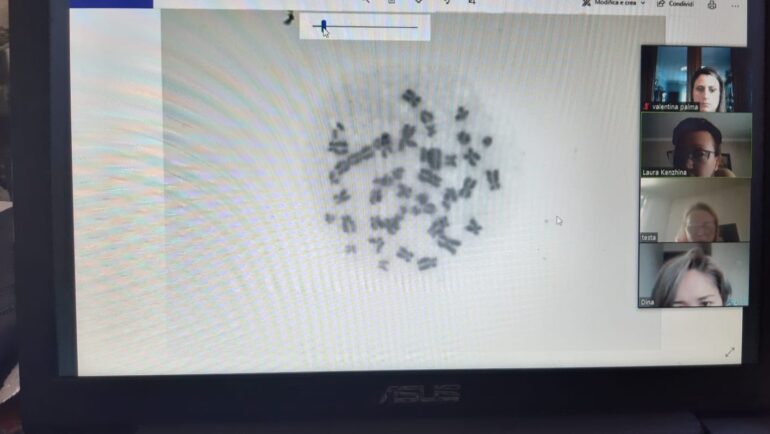
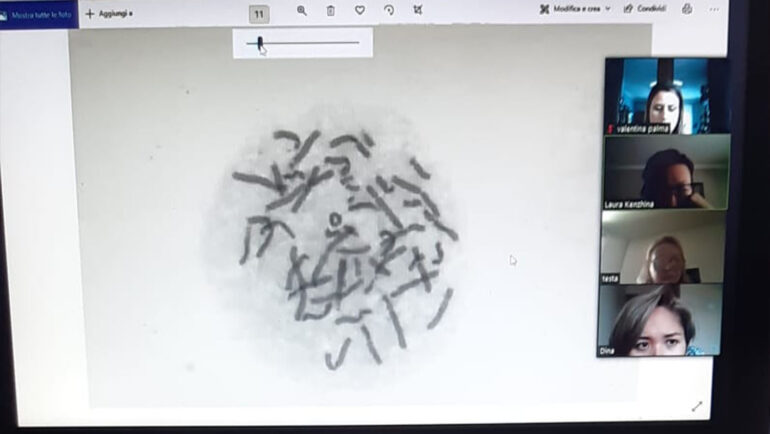
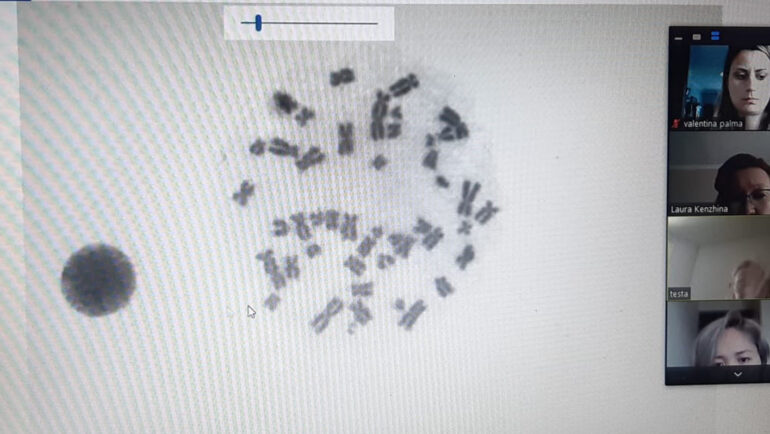
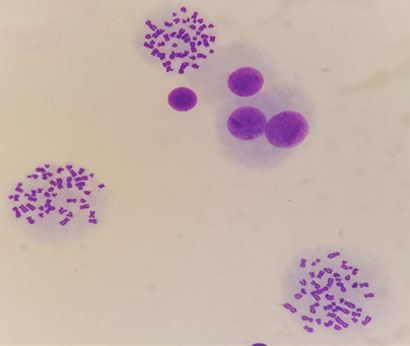
Simultaneous visualisation of metaphases (M1) for analysis of dicentrics and binucleated cells (BN) for the analysis of micronuclei on the same slide (400 x magnitude)
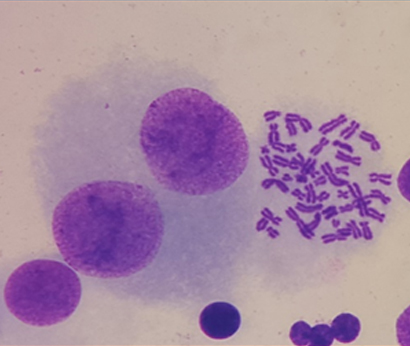
Simultaneous visualisation of metaphases (M1) for analysis of dicentrics and binucleated cells (BN) for the analysis of micronuclei on the same slide (1000 x magnitude)
